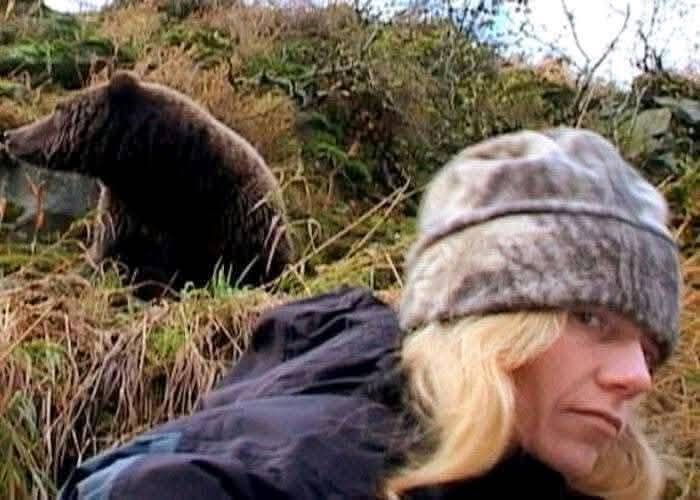On October 5, 2003, a tragic and grisly incident unfolded in the remote wilderness of Katmai National Park and Preserve in Alaska. Timothy Treadwell, a self-proclaimed bear enthusiast and environmentalist, along with his girlfriend, Amie Huguenard, was killed and partially consumed by a brown bear. The event shocked the world and sparked both admiration and controversy regarding Treadwell’s unconventional approach to wildlife interaction.
A Passion for Bears
Timothy Treadwell had dedicated thirteen summers to living among the wild grizzly bears in Alaska. With no formal scientific training, Treadwell nonetheless immersed himself in the study and filming of bears, developing a deep emotional and spiritual connection to them. He documented his experiences on camera and became known for his passionate advocacy for bear conservation. He co-founded the organization Grizzly People, which aimed to educate the public about bears and promote their protection.
Amie Huguenard, a physician’s assistant from Colorado, shared Treadwell’s love of nature and joined him on several expeditions. Though reportedly more cautious than Treadwell about the dangers posed by bears, she supported his mission and was present during his final trip in 2003.
A Deadly Decision to Stay
Typically, Treadwell would leave Katmai by late September, when bear activity increased and food sources began to dwindle, making the animals more aggressive and unpredictable. However, in 2003, he and Huguenard decided to extend their stay into early October. Some reports suggest that Treadwell returned after an earlier departure because he was frustrated with park rangers and tourists interfering with his work, while others speculate he wanted to observe late-season bear behavior.
By this point in the year, many of the bears Treadwell had grown familiar with had moved to other feeding grounds. The area was instead occupied by less habituated, more desperate bears. This included a particularly large and aggressive male bear, estimated to be over 1,000 pounds, who was later identified as the likely attacker.
The Attack
On the night of October 5, a distressing sequence of events unfolded. Treadwell had set up his video camera but had not removed the lens cap, indicating that he may have turned it on in a moment of emergency. The audio, however, captured six minutes of a chilling struggle: sounds of growling, screaming, and efforts to fend off the bear. Amie Huguenard can reportedly be heard in the background, screaming and urging Treadwell to fight back. At some point during the attack, she too was killed.
Their remains were discovered the next day by pilot Willy Fulton, who had arrived to pick them up. The scene was gruesome: their partially consumed bodies were found near their campsite, along with a collapsed tent and the remains of the bear that was shot and killed by park rangers later that day.
Aftermath and Legacy
The tragedy prompted an outpouring of public attention and raised numerous questions about human interaction with wild animals. Critics argued that Treadwell’s approach—getting too close, refusing to carry bear spray, and anthropomorphizing the bears—had not only endangered himself but also put the animals at risk. Some wildlife experts and park officials had long been concerned about his methods, fearing they could lead to bears losing their natural fear of humans, which might increase the likelihood of dangerous encounters.
Supporters, on the other hand, viewed Treadwell as a well-intentioned, if misguided, figure whose love for wildlife came from a genuine place of admiration and care. They praised his ability to bring public attention to the majesty of grizzly bears and the need for their conservation.
Filmmaker Werner Herzog later explored Treadwell’s life and death in the critically acclaimed 2005 documentary Grizzly Man. Using Treadwell’s own video footage, the film presents a complex portrait of a man driven by passion, idealism, and perhaps delusion, offering no easy answers about the risks and ethics of his mission.
Conclusion
The deaths of Timothy Treadwell and Amie Huguenard serve as a sobering reminder of the inherent dangers of wild nature. While their story is often viewed through the lens of tragedy, it also remains a powerful narrative about the fine line between admiration and over-familiarity with the natural world. Treadwell’s legacy endures in both the warnings it imparts and the conversations it continues to spark about how humans engage with the wilderness.
Would you like a shorter version of this for social media or an article header?

Leave a Reply